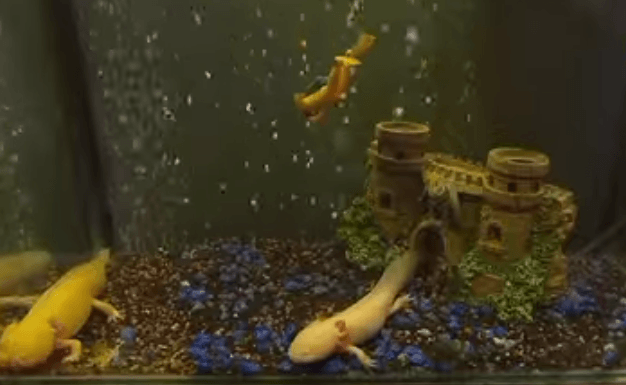 Giving proper care for axolotls is crucial to retain their health and well-being. One of the most important factors to look into when it comes to caring for axolotls is the condition of their tanks. Like humans, they need proper living conditions to sustain their health and well-being. Water quality is one of the primary considerations when maintaining the axolotl tank. If you are planning to grow your own axolotls, make sure you know about the requirements to keep them safe and healthy.
Giving proper care for axolotls is crucial to retain their health and well-being. One of the most important factors to look into when it comes to caring for axolotls is the condition of their tanks. Like humans, they need proper living conditions to sustain their health and well-being. Water quality is one of the primary considerations when maintaining the axolotl tank. If you are planning to grow your own axolotls, make sure you know about the requirements to keep them safe and healthy.
Other Tank Inmates, & Other Axolotls
If you plan on putting axolotls into the tank with other marine species, think again. Fish, for instance, could put the life of your axolotls in jeopardy. They could nibble on the axolotl! On the flip side, axolotls eat anything that is smaller than them. If you put other smaller fish species inside the tank, then they will likely feed on it!
The same even goes for the young axolotls – you cannot put them inside the tank with adult axolotls. Even the adult axolotls will end up feeding on their baby axolotls.
Temperature & Cooling
Achieving the proper temperature inside the axolotl tank is one of the primary factors to consider. Axolotls are naturally more adaptable to cool water. Hence, you must keep the water temperature inside the tank low as they are stressed when the water temperature rises. One reason for this is that the lakes of Mexico from which axolotls originate from have higher altitudes; hence, they are more comfortable when water is at a low temperature.
When temperature inside the tank reaches 75-degree Fahrenheit, this can cause stress on the axolotls and even lead to illness or death. Hence, maintain the water temperature inside the tank to below 70-degree Fahrenheit.
Water Flow
The amount of water flowing into the tank is another crucial factor for maintaining the living conditions of axolotls. A significant or high pressure flow can cause a lot of stress on axolotls. In addition, it can also put them at risk for developing various diseases. If you can, make sure to install a facility that will regulate the water flow inside the tank. Also, aim the filter towards the glass so the water flow is not aimed directly at axolotls.
pH: Acidity & Basicity/Alkalinity
The right pH level is another significant factor affecting the quality of life that axolotls have inside the tank. It is therefore a good step to measure the pH level of the water in your area. That way, you know the pH of the water you put inside the tank. Water that is too acidic or too basic is not good for breeding axolotls.
Chlorine & Chloramines
Chlorine and chloramines are substances that are added to water supply to make them safe for human consumption – they are designed to kill bacteria in the water source. However, they might not be safe for axolotls, especially if you intend to use the same water you drink from for the tank. It might be recommended to use a de-chlorinator for your tank water and leave them for 24 hours. This is to ensure that no trace of chlorine or chloramine is present and that it is safe for the axolotls.
Ammonia, Nitrite, & Nitrate
These three substances are crucial elements to look into when installing a biological filtration system for your water tank. Axolotls’ waste is a type of ammonia, which can be toxic, especially when present in large quantities. If the ammonia is combined with a high pH level, this makes the water quality inside the tank toxic for the axolotls. It is therefore recommend you undergo regular ammonia test on your aquarium. This will help regulate the water quality and maintain a safe level for the axolotls.
Water Hardness & Dissolved Salts
Hard water is common in some areas; therefore, you need to check the hardness of your water supply if you are going to use it  for your axolotl tanks. You can perform numerous tests to determine the hardness of water in your area. Either way, it is important to regulate this quality because it can react with other factors like pH level and the overall chemical equilibrium of the water that can put your axolotls at risk.
for your axolotl tanks. You can perform numerous tests to determine the hardness of water in your area. Either way, it is important to regulate this quality because it can react with other factors like pH level and the overall chemical equilibrium of the water that can put your axolotls at risk.
Final Words
There are several factors to take into account when maintaining the conditions inside the axolotl tanks. Therefore, it is your responsibility to look after them and ensure that the water tank is not endangering the lives of your axolotls.

 Author and long-time animal lover. Sharing knowledge on pet care through experience and the written word.
Author and long-time animal lover. Sharing knowledge on pet care through experience and the written word.